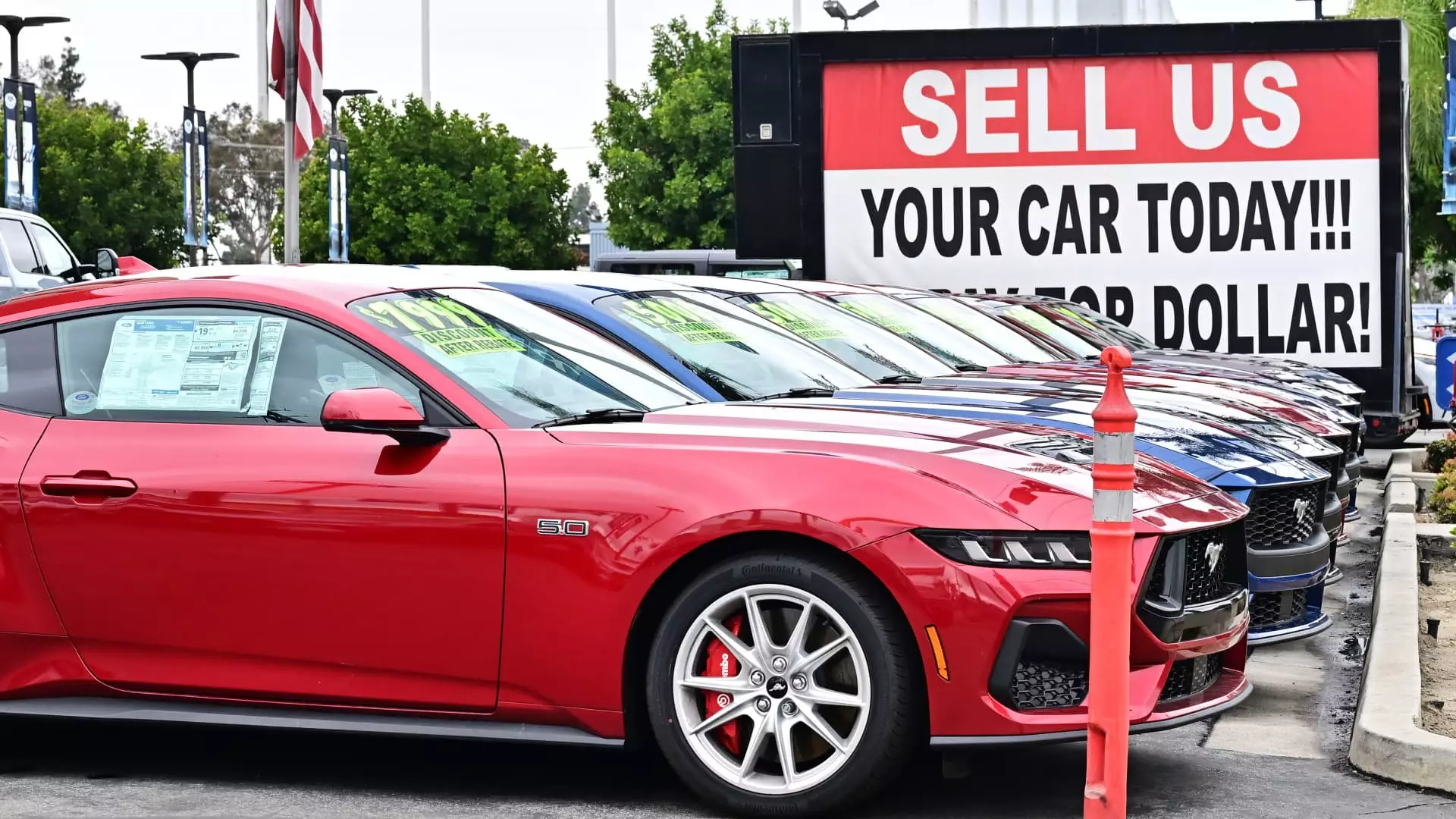The automotive market is in a precarious state, especially concerning used vehicles, where price fluctuations tell a tale of uncertainty. The latest findings from Cox Automotive’s Manheim Used Vehicle Value Index indicate an unsettling decline of 1.5% from April to May. While this might seem like a minor dip, it is essential to recognize that prices are still a noteworthy 4% higher than they were just a year ago. Such statistics aren’t simply numbers; they reflect the complex interplay between consumer behavior and broader economic trends, intricately influenced by factors such as tariffs and supply chain disruptions.
Consumer Behavior Amidst Uncertainty
April witnessed an unprecedented high price point, a move fueled by consumers who felt compelled to act before fear of impending price hikes governed the market. This pattern of erratic behavior—buyers rushing to purchase vehicles to avoid future costs—highlights an unstable mindset in the current economy. The market’s stunning rebound in April only underscored the volatility, leaving many consumers bewildered as prices softened in May. Amid such unpredictability, consumer trust in the automotive market appears to be faltering, leading to a cautious approach to vehicle purchases.
The Invisible Hand of Tariffs
While the direct impact of Trump’s 25% tariffs on new imported vehicles does not necessarily trickle down to used car sales, the ripple effects are clear. The rising costs of new vehicles inevitably push consumers to consider preowned options, yet with a clear understanding that every move made by the auto industry affects their pocketbooks. The retail landscape for used vehicles has not kept pace with wholesale changes, resulting in lingering prices that don’t always reflect current economic realities. This discrepancy not only complicates the buying process but also fosters a climate of skepticism and uncertainty, which is the antithesis of consumer confidence.
Keeping Up with Historical Trends
Despite these challenges, there are historical patterns worth noting. The availability of used cars remains alarmingly low, with inventory levels at around 2.2 million—significantly below historical averages. This scarcity is compounded by the reluctance of consumers to part with their vehicles, a trend that seems to persist post-pandemic. Americans are holding on to their cars longer, a behavior that could stifle future sales in an already tenuous market. The decline of retail sales by 3% in May compared to April, while still marking an annual increase, points to a stagnation that bodes ill for dealers and manufacturers reliant on continued movement in the automotive sector.
Stabilization or Stagnation?
The used vehicle market is at a crossroads. While recent stabilization efforts seem to have calmed the tumultuous waves of previous years, one must question whether this is truly a step towards recovery or merely a façade concealing deeper, unresolved issues. As economic uncertainties loom and consumer sentiment wavers, the automotive industry may need to rethink its strategies to adapt to a rapidly changing landscape. The path forward may hinge more on consumer experiences and perceptions than on statistical indices, revealing a market that is less robust than the numbers might suggest.



Leave a Reply